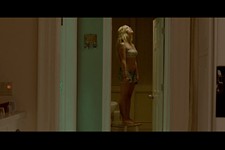The Wild Bunch
By Charles Ramirez Berg, Fri., Oct. 22, 1999

When I first saw The Wild Bunch in El Paso in 1969, my reaction was gut-level and cinematic -- probably just what Sam Peckinpah intended. Afterward, my date, who is now my wife, asked me what I thought. Standing in stunned silence outside the Plaza Theater, looking at the poster of the film for a clue to help me comprehend what I'd just seen, I said I'd have to think about it. Thirty years later, I'm still thinking.
Today it's difficult to appreciate how cinematically ferocious the film was back then, how searing an experience watching The Wild Bunch was. A frontal assault to established cinematic sensibilities, we had never seen anything like it. Yes, there were the bloody shootouts in Leone's spaghetti westerns, and there was the bank teller's getting shot in the face in Arthur Penn's Bonnie and Clyde (1967), but these were brief, emphatic, tour de force moments. The Wild Bunch was a feature-length tour de force.
It is also Peckinpah's most enduring and satisfying masterpiece and it changed the face of cinema forever. Here are some of the reasons why:
Its Lasting Influence -- still evident today, in the graphic violence of Martin Scorsese, John Woo's quick cut/slo-mo shoot-out montages, Quentin Tarantino's gritty street lingo and wince-producing violence, and the choreographed violence in Robert Rodriguez's Desperado shootouts. Even the scene in From Dusk Till Dawn where Quentin Tarantino drinks booze from Salma Hayek's foot has its origin in Alfonso Arau's federal officer doing the same thing in The Wild Bunch.
The Violence, Of Course -- violence that was simultaneously beautiful and horrible. For the most part, Hollywood violence before Bonnie and Clyde, the spaghetti westerns, and The Wild Bunch was a sanitized, "bang-you're-dead" movie convention -- no splattered blood or contorted body spasms. Like Hitchcock, Peckinpah understood our fascination with violence, and he made it aesthetically breathtaking (the spectacular opening and ending set pieces) and terrible (the killing of innocent bystanders; using women as shields; Pike's [William Holden] killing one of his wounded men -- at the man's own request; the protracted torture of Angel [Jaime Sanchez]). Though tame by today's standards, the film's violence was extreme, but juxtaposed to the brutal realities of political assassinations, urban riots, and the Vietnam war on the nightly news, it seemed a more honest brand of filmmaking, perfectly of a piece within that social context.
Language That Demystified the Romantic West -- "Shit!" old man Sykes (Edmund O'Brien) yells when Tector (Ben Johnson) throws lit dynamite at him as a joke. "Bitch!" says Pike, as he turns to kill the woman who shot him in the back in the final battle. "Son of a bitch," mutters Dutch (Ernest Borgnine) as he watches Mapache (Emilio Fernández) torture Angel to death. It's commonplace now, but in 1969, people didn't talk like that in most movies, certainly not in most Westerns. Who's Afraid of Virginia Woolf? (1966) brought the language that Americans heard in their daily lives to the screen, and by bringing that language to Hollywood's romanticized West, Peckinpah effectively shattered the mythic and moral foundations of the genre.
Intertextuality That Hurt -- Several of the film's stars had appeared in John Ford westerns. Edmund O'Brien, for example, played the drunken newspaper editor in The Man Who Shot Liberty Valence (1962); William Holden the doctor in The Horse Soldiers (1959), and Ben Johnson a young sergeant in She Wore a Yellow Ribbon (1949) and the hero in Wagonmaster (1950). Thus they were linked in the filmgoer's mind with another, more romantic (though, in its own way, increasingly dark and problematic) view of the West. Though O'Brien's Sykes may simply be a randy extension of the character he played for Ford, Holden's Pike Bishop is a painful departure from the well-heeled professional he played in The Horse Soldiers, and to see Ben Johnson as Tector in a vat of liquor playing with the naked breasts of a Mexican woman was a cinematic slap in the face.
Peckinpah Montage -- Early in Akira Kurosawa's The Seven Samurai, one samurai kills another in a duel and in an unexpected shift in film speed, the dead man falls to the ground in silent slow motion. Peckinpah borrowed that Kurosawa motif and blended it with the staccato montage of Russian filmmakers like Sergei Eisenstein and Dziga Vertov (which had been revived by the French New Wave in Jean-Luc Godard's jump cuts and the quick, subliminal editing of Alain Resnais' Last Year at Marienbad [1961]) to create his signature editing style. True, we had seen flashes of such rapid-fire editing techniques in the ambush in Bonnie and Clyde and in Richard Lester's masterful Petulia (1968). But Peckinpah's hurly-burly, everything's-happening-at-once montage was his alone, and to achieve it The Wild Bunch contained more individual cuts (3,642) than any other color film in history.
A Nihilistic Worldview -- Heroism and innocence are in short supply in The Wild Bunch. The railroad man is ruthless, the posse barbaric, the army a collection of incompetents, and the bad guys are as close to good guys as you're going to get, and they're not that good. Even children, Hollywood's traditional vessels of innocence, are rotten. They play cruel games with insects at the film's beginning, and as Angel's body is being dragged behind Mapache's automobile, they jump on it as if it was an amusement park ride. Peckinpah's revises the Western by subverting its core assumption -- that most of society is good and needs defending from the freak appearance of evil. Here, save for seldom-seen indio rebels fighting against Mapache, no one is innocent, everyone has a dark side.








